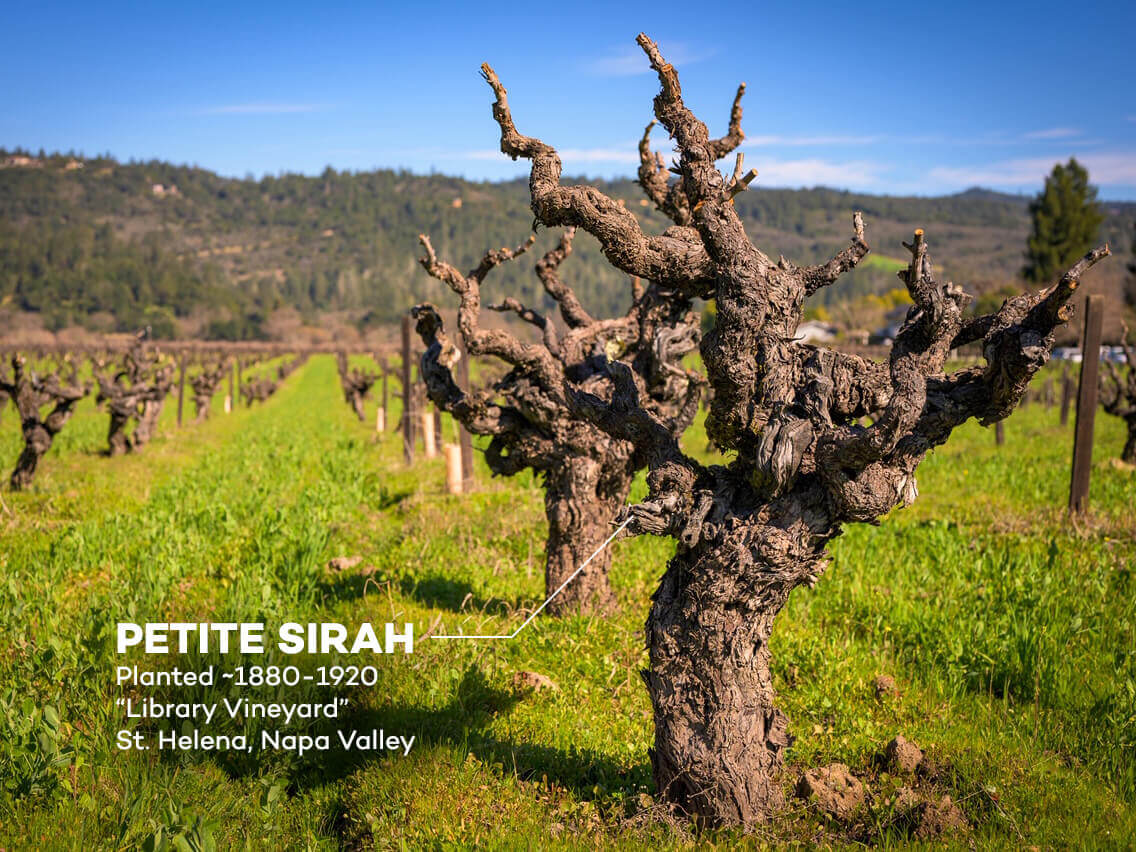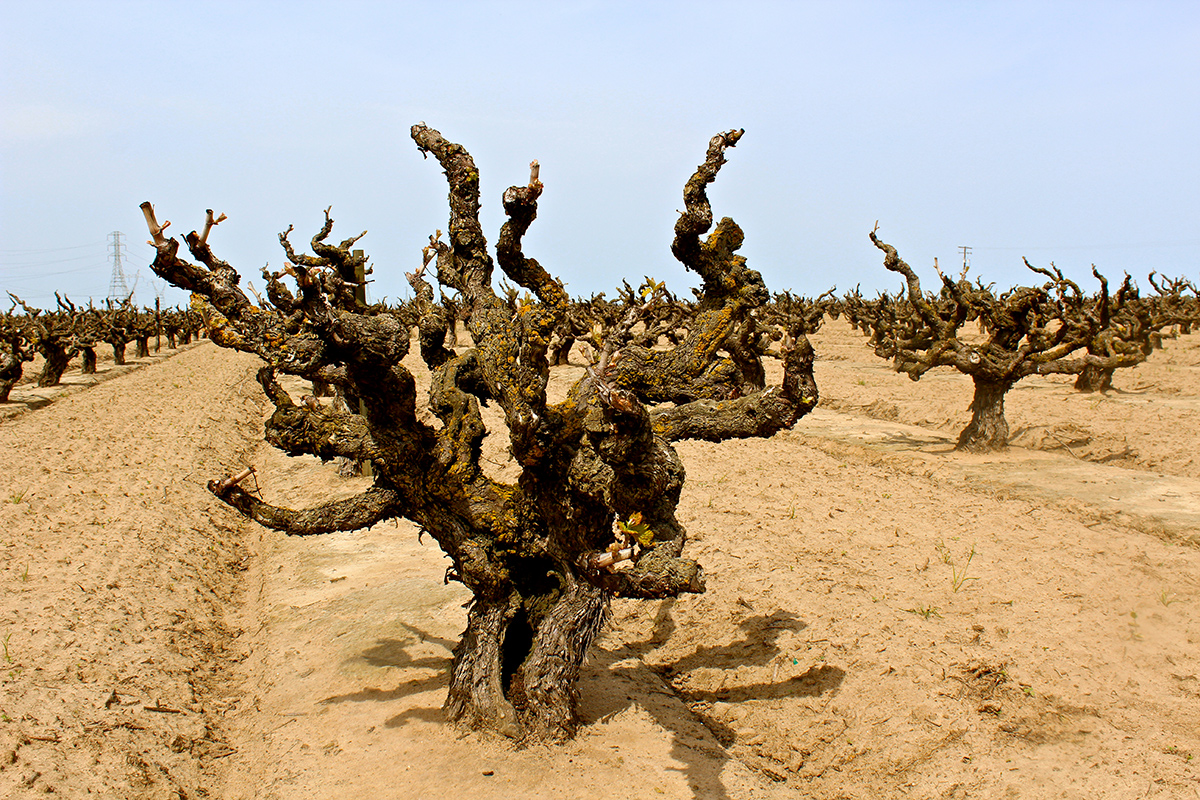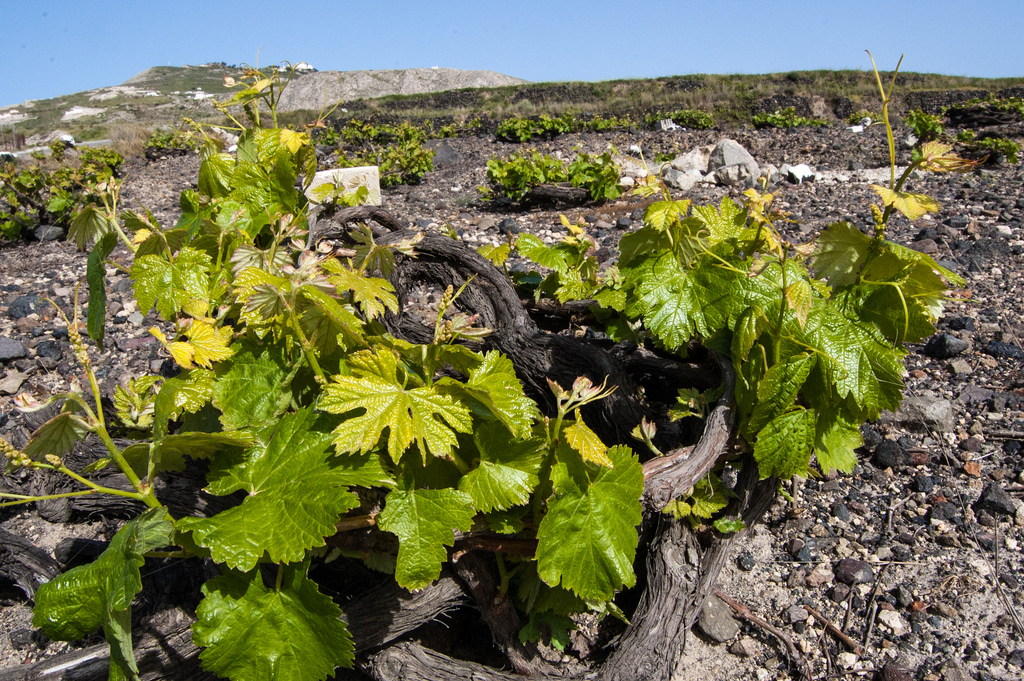What is it about old vine wines that’s so special? Let’s explore some of the theories about aging vineyards and why they’re so rare.
Perhaps you spotted the words “old vines” printed on a bottle label. Or, maybe you heard some besotted crony at the local wine bar loudly profess a love for old vine Zinfandel. You can’t let a tasty option elude your palate, let’s figure out why these elderly grapevines are the real deal.
But first, are they?
How Old Do Vines Need To Be To Make Good Wine?
Here’s a brief lowdown on the lifecycle of a grapevine:
- After you plant, it takes about three years for a grapevine to produce fruit.
- A vine reaches “adulthood” around seven or eight years.
- A “mature” grapevine is said to be anywhere from 12–25 years old.
- “Old vines” are usually more than 25 years, and preferably more than 50 years old!

What’s interesting is that over the lifecycle of a grapevine there are some noted changes that give aging vineyards unique qualities:
-
They produce concentrated fruit
Old vines tend to lose productivity with age. Many believe that this increases the concentration of the fruit and yields more concentrated wine.
-
Their roots run deep
This sounds nice but it also means that vines pull their nutrients and water sources from far below the surface. For this reason, older vines don’t suffer as much vintage variation and tend to be more draught/flood tolerant.
-
Ripeness isn’t a problem
The real issue with ripening fruit (especially with red wines) is the tannins. Unripe tannins can taste green and astringent. Producers note older vines tend to achieve physiological ripeness more consistently.
-
They take care of themselves
Caretakers of elderly vineyards tend to not need to do as much futzing (as long as the vines are healthy). Still, one must be very careful not to damage the vine!
The problem with old vines (if you can call it that) is reduced production. Less production means less money for a grape grower.
Additionally, older vineyards aren’t on trend; you’ll find them planted with oddball varieties like Petite Sirah, Trousseau, Zinfandel, and Carignan. This means a grape grower can’t charge a high price for their fruit.

FUN FACT: The oldest living, grapevine, “Stara Trta,” grows in Maribor, Slovenia. The vine is a rare red Slovenian variety called Žametovka.
Wines are star bright, ruby colored wines with puckering acidity, raspberry, and red currant notes, and low alcohol. Surprisingly, it’s possible to buy wines made from grapes grown from this vine!

Places With Old Vineyards
Fortunately, there are several regions that are known for old vine wines. These places are typically off-the-beaten path in areas where growers didn’t pull out vineyards to replace them with more “en vogue” varieties. Here are a couple of regions worth investigating!
Lodi, California
Lodi is twice as large as Napa Valley with about 100,000 acres (40,500 hectares) of grapes. The region was an epicenter of grape production back in the late 1800s. You’ll find a lot of Zinfandel along with other unique varieties like Trousseau, Touriga Nacional, and Tannat.
Languedoc, Southern France
During the 1970s, Languedoc became known as “The Wine Lake” because of the overproduction, namely with the Carignan grape. It got so bad that wines produced in the area went directly to be distilled for fuel. The country instituted a large scale grubbing up regime, paying farmers to pull out their vines, and many did. Fortunately, the ones that didn’t still produce some of the best Carignan wines known to man!
Barossa Valley, Australia
South Australia is lucky enough to be so isolated that the Shiraz and Grenache vines here haven’t been infected with phylloxera. This area is replete with ancient vineyards! In fact, it’s the only region in the world with an official Old Vine Charter – “Old Vine” (35+ years), “Survivor Vine” (70+ years), “Centurion Vine” (100+ years), and “Ancestor Vine” (125+ years).
Santorini, Greece
Red wines aren’t the only type of wine to benefit from mature vineyards. On Santorini island you’ll find the rare Assyrtiko grape trained low to the ground into bizarre wreath-shaped vines. The best grapes are often used for a rare oaked version of the wine called “Nykteri,” which is not too dissimilar from fine white Burgundy.

Last Word: In With The Old
It’s easy to get caught up in the latest trends, whether they be in technology or health movements. But remember, it is useful to make an effort in preserving what’s worth keeping, even if it comes with a cost. After all, time is one of those things we can never get back.
